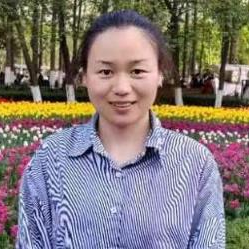GaN-Based Materials and Devices: Research and Applications
A special issue of Micromachines (ISSN 2072-666X). This special issue belongs to the section "D1: Semiconductor Devices".
Deadline for manuscript submissions: 30 September 2024 | Viewed by 2166
Special Issue Editors
Interests: AlInGaN semiconductor materials; quantum wells/dots; optoelectronic devices; epitaxial growth; performance characterization
Special Issue Information
Dear Colleagues,
Wurtzite III-nitrides semiconductor materials, represented by GaN, have been widely used in high-frequency, high-power, and optoelectronic devices due to their excellent electrical and optical properties. For example, their superior electron mobility and wide bandgap make them highly promising candidates for high-frequency and high-power electronic devices. Furthermore, their direct and tunable bandgap have made them attractive for various optoelectronic applications, such as light-emitting diodes (LEDs), laser diodes (LDs), sensors, and photovoltaic cells. Yet the potential of GaN-based devices is still far from being fully developed. The challenges exist in many aspects, such as the poor material quality, unstable fabrication process, and thermal management. Therefore, by leveraging the intriguing properties of (Al,In)GaN compound semiconductors, researchers and engineers may develop devices with improved performance, benefiting various aspects of our daily lives.
The Special Issue "GaN-based Materials and Devices: Research and Applications" of the Journal Micromachines aims to present recent advantages in the design, growth, fabrication, characterization, and simulation of GaN-based compound semiconductors, as well as their related electronic and optoelectronic devices. The scope of this Special Issue includes, but is not limited to:
- Epitaxial growth, fabrication, and characterization techniques for state-of-the-art AlInGaN alloys and their semiconductor heterostructures;
- Research on the physical, chemical, electronic, and optical properties of GaN-based materials and devices for various applications;
- Novel concepts for device structure design;
- Advanced simulation or modeling for GaN-based electronic and optoelectronic devices.
We look forward to receiving your submissions to this Special Issue!
Dr. Wei Liu
Dr. Kun Wang
Guest Editors
Manuscript Submission Information
Manuscripts should be submitted online at www.mdpi.com by registering and logging in to this website. Once you are registered, click here to go to the submission form. Manuscripts can be submitted until the deadline. All submissions that pass pre-check are peer-reviewed. Accepted papers will be published continuously in the journal (as soon as accepted) and will be listed together on the special issue website. Research articles, review articles as well as short communications are invited. For planned papers, a title and short abstract (about 100 words) can be sent to the Editorial Office for announcement on this website.
Submitted manuscripts should not have been published previously, nor be under consideration for publication elsewhere (except conference proceedings papers). All manuscripts are thoroughly refereed through a single-blind peer-review process. A guide for authors and other relevant information for submission of manuscripts is available on the Instructions for Authors page. Micromachines is an international peer-reviewed open access monthly journal published by MDPI.
Please visit the Instructions for Authors page before submitting a manuscript. The Article Processing Charge (APC) for publication in this open access journal is 2600 CHF (Swiss Francs). Submitted papers should be well formatted and use good English. Authors may use MDPI's English editing service prior to publication or during author revisions.
Keywords
- group III-nitrides semiconductors
- epitaxial growth and fabrication
- Al(In)GaN heterostructure
- polarization and piezoelectric effect
- nanostructures for wide bandgap materials
- RF and power devices
- display and illumination applications
- novel design concepts
- device simulation







